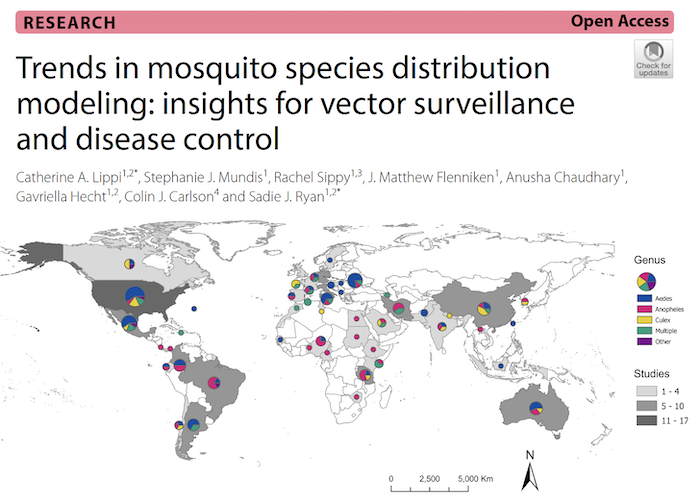
LIPPI, MUNDIS, SIPPY, FLENNIKEN, CHAUDHARY, HECHT, RYAN – Trends in mosquito species distribution modeling: insights for vector surveillance and disease control
Catherine Lippi, Stephanie Mundis, Rachel Sippy, Matthew Flenniken, Anusha Chaudhary, Gavriella Hecht, Colin Carlson, Sadie Ryan
Article first published online: 28 August 2023
DOI: https://doi.org/10.1186/s13071-023-05912-z
ABSTRACT: Species distribution modeling (SDM) has become an increasingly common approach to explore questions about ecology, geography, outbreak risk, and global change as they relate to infectious disease vectors. Here, we conducted a systematic review of the scientific literature, screening 563 abstracts and identifying 204 studies that used SDMs to produce distribution estimates for mosquito species. While the number of studies employing SDM methods has increased markedly over the past decade, the overwhelming majority used a single method (maximum entropy modeling; MaxEnt) and focused on human infectious disease vectors or their close relatives. The majority of regional models were developed for areas in Africa and Asia, while more localized modeling efforts were most common for North America and Europe. Findings from this study highlight gaps in taxonomic, geographic, and methodological foci of current SDM literature for mosquitoes that can guide future efforts to study the geography of mosquito-borne disease risk.
Read the full publication in Parasites and Vectors.